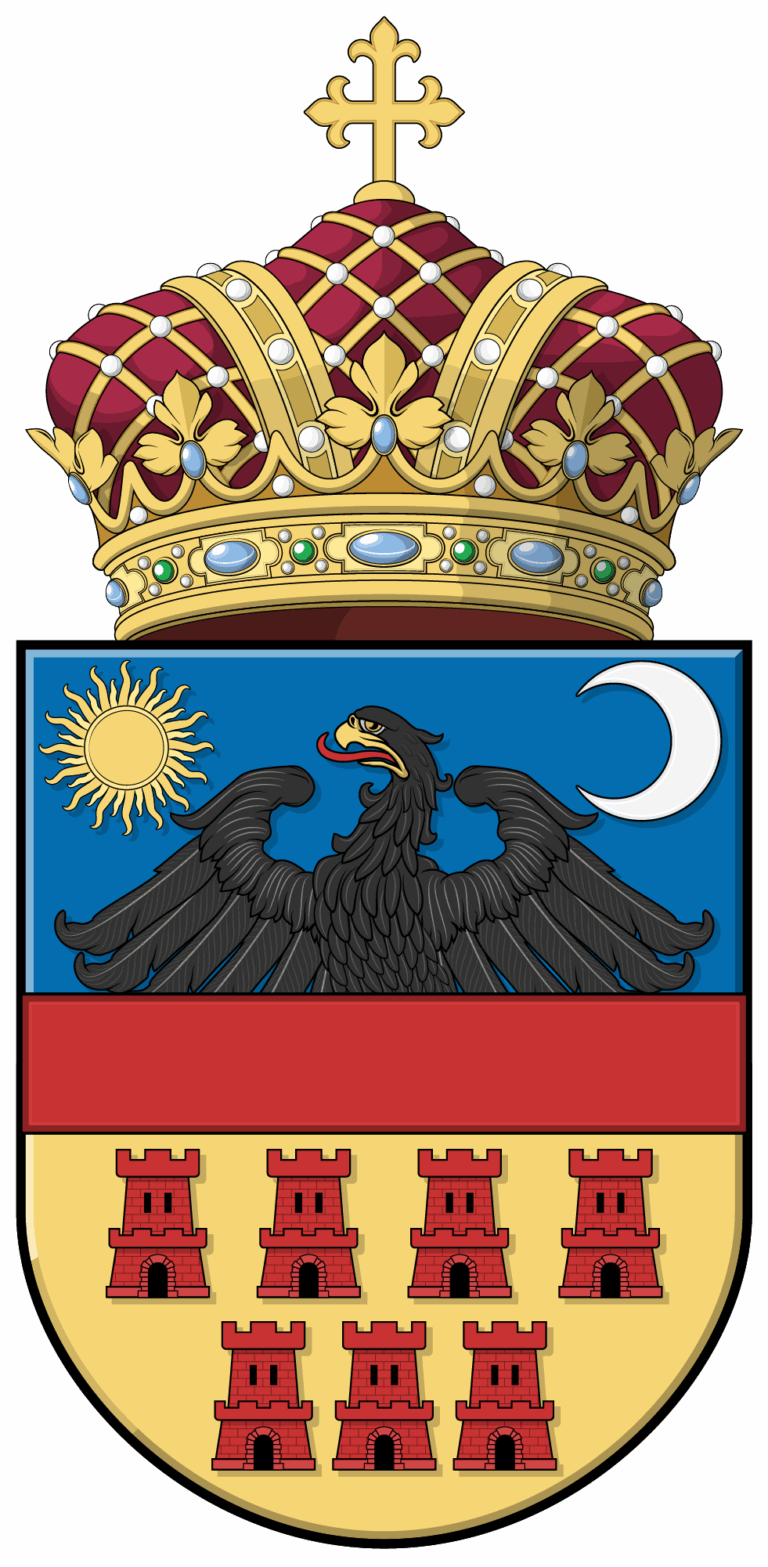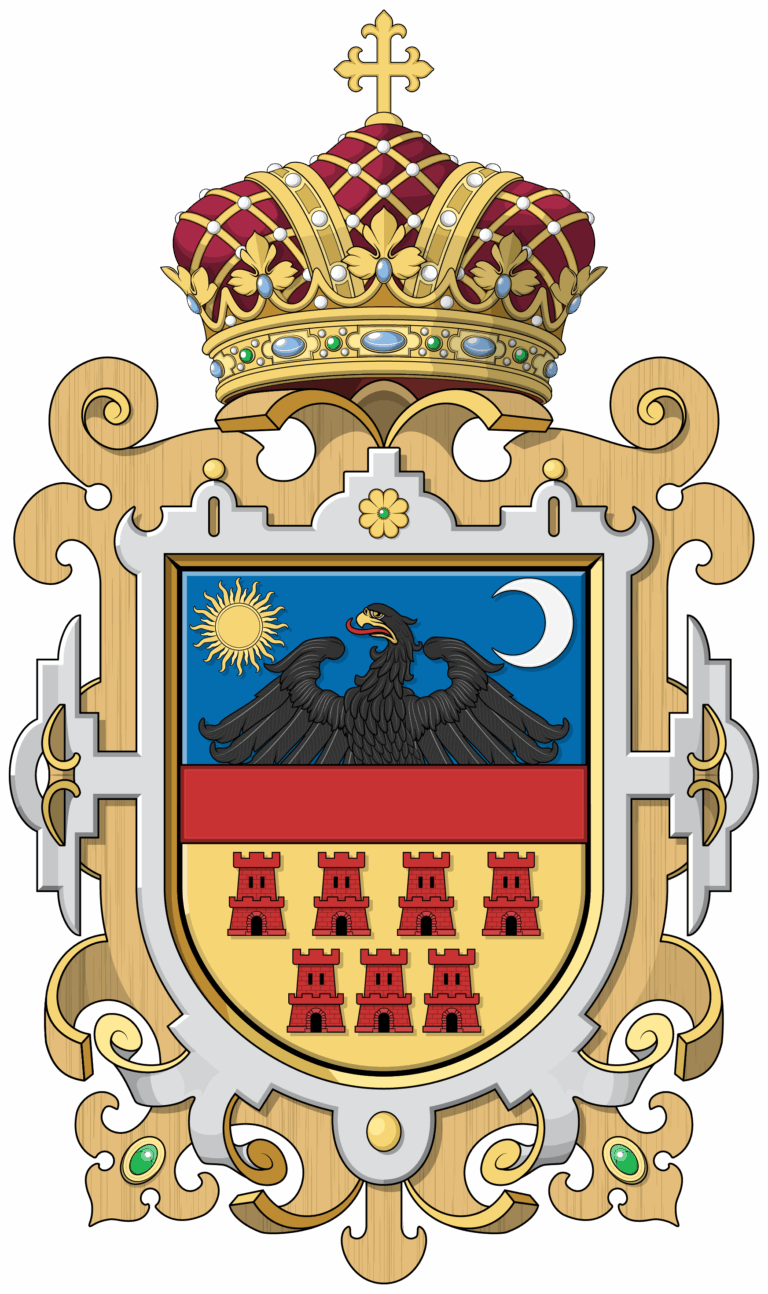Kezdőlap » Historical coat of arms of Transylvania
Historical coat of arms of Transylvania
Description of the coat of arms
In the historical coat of arms of Transylvania, the coat of arms is divided into two parts by a red band. Above, on a blue background, there is a black falcon (turul) armed with gold, with a red tongue, cut, accompanied by a golden sun on the right (now just a simple sun) and a silver waning moon on the left. Below, on a golden background, there are seven red bastions with black gates and 2 windows each, arranged in two rows (4+3).
Origin
The red band dividing the coat of arms of Transylvania first appears on the thaler of Michael I Apafi in 1666, and it did not occur anywhere before that.
It was officially granted by Maria Theresa to Transylvania, which was elevated to the rank of a grand duchy, in 1765. On Maria Theresa’s coat of arms of 1765, the shield is covered by a princely crown. On both sides, it is accompanied by allegorical female figures, on the right, symbols of justice, on the left, and abundance and reward. These – after Transylvania was united with the mother country in 1848 – are no longer in use.
At the 1659 Diet of Szászsebes, where the symbols of the orders were decided, it was stated that the Székelys should be symbolized by the sun and the moon, and the moon should be depicted as a crescent. In addition, the Transylvanian counties are symbolized by the crescent eagle, and the Saxon nation of the order is symbolized by the seven bastions, says the Diet resolution.
According to the general explanation, the coat of arms of Transylvania unites the symbols of the three privileged Transylvanian nations: the Hungarians, the Székelys and the Saxons. It was probably formed during the reign of Sigismund Báthory, in 1590. The Hungarian nation is represented by the black turul bird, the Székelys by the sun and the moon, while the Saxon seats (Kőhalom, Medgyes, Nagysink, Sebes, Szeben, Szászváros, Szerdahely) are represented by the seven red bastions.
These coat of arms elements were used by the individual princes during the independent statehood of Transylvania in combination with their own family coats of arms. The location of the coat of arms did not remain constant for a long time, but migrated within the shield.
The coat of arms can be found incorporated into the Hungarian central coat of arms (after 1867), as well as on the current coat of arms of Romania.
Original image source:
Hugo Gerhard Ströhl: Wappen der Österreichisch-Ungarischen Monarchie, aus dem Heraldischen Atlas des Künstlers, 1899 (Coats of arms from the Austro-Hungarian Empire, from Heraldischer Atlas by the artist, 1899)
Text source: Wikipedia
The visual content of this website may be freely used under the terms of the Creative Commons 4.0 license, provided that the source is clearly indicated and the reference is included as a fully functional, clickable link pointing to https://cimerek.hu or the specific URL of the given content.
Two other versions of the coat of arms

